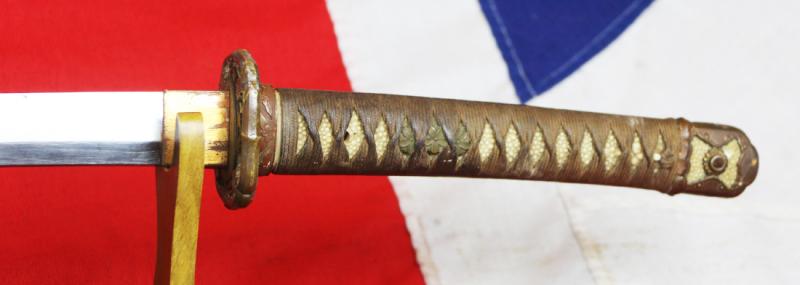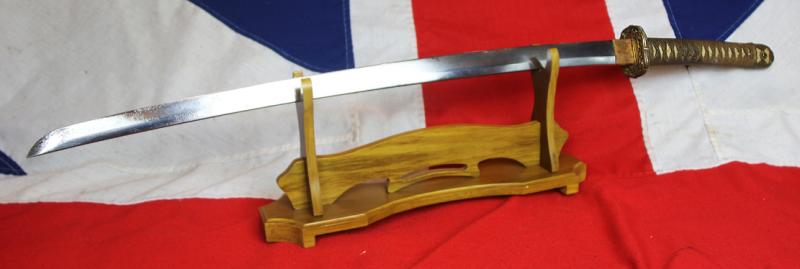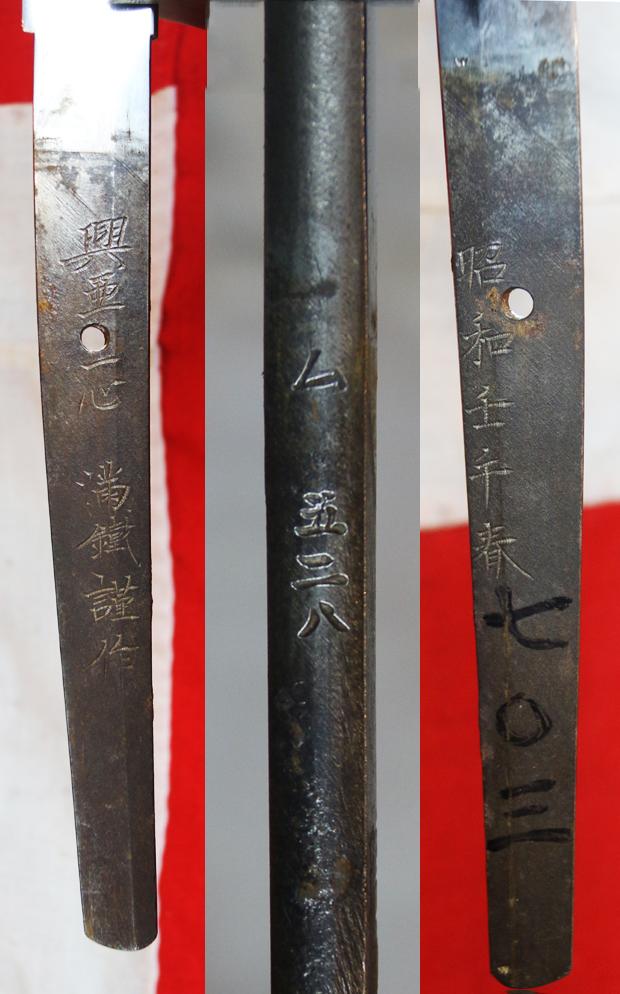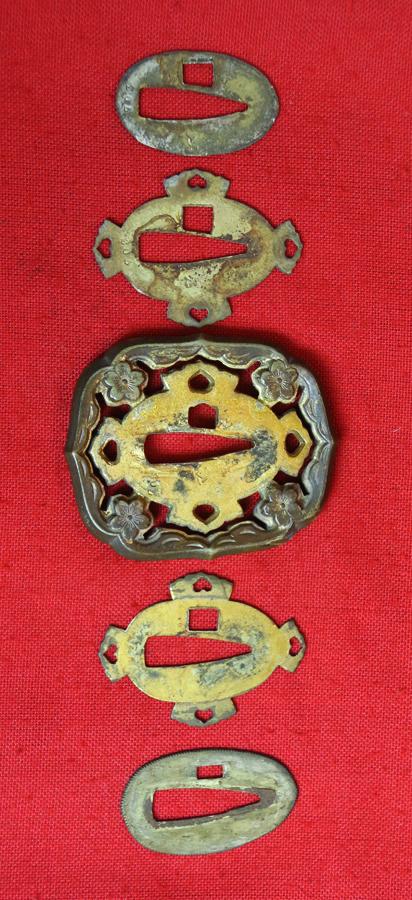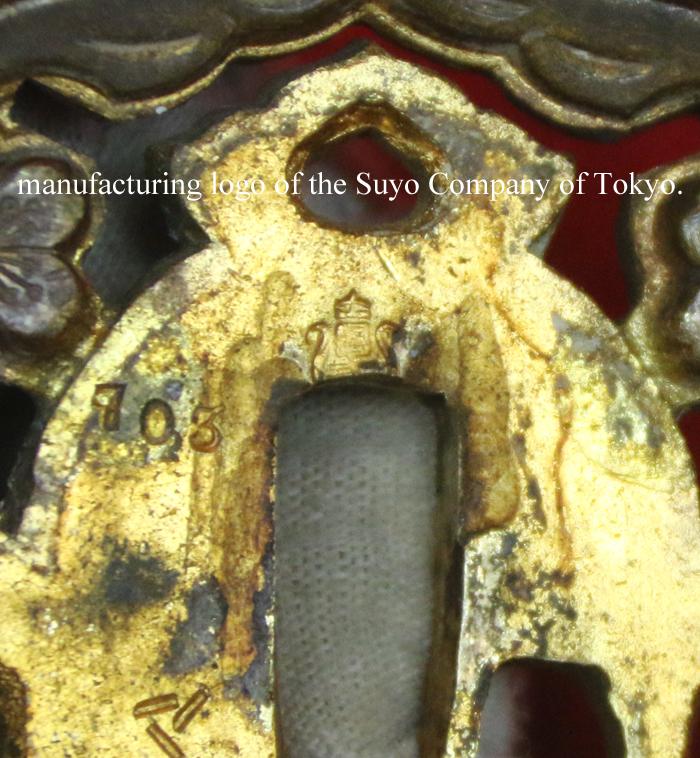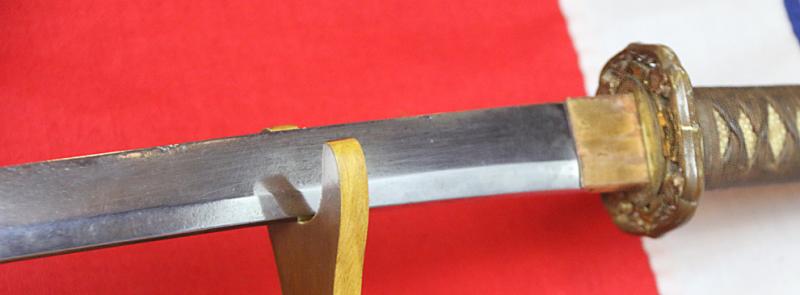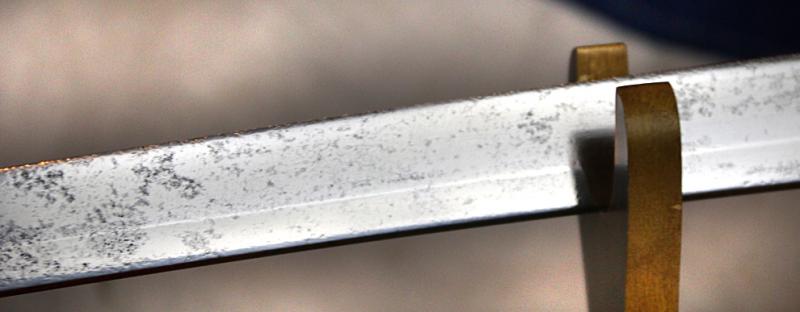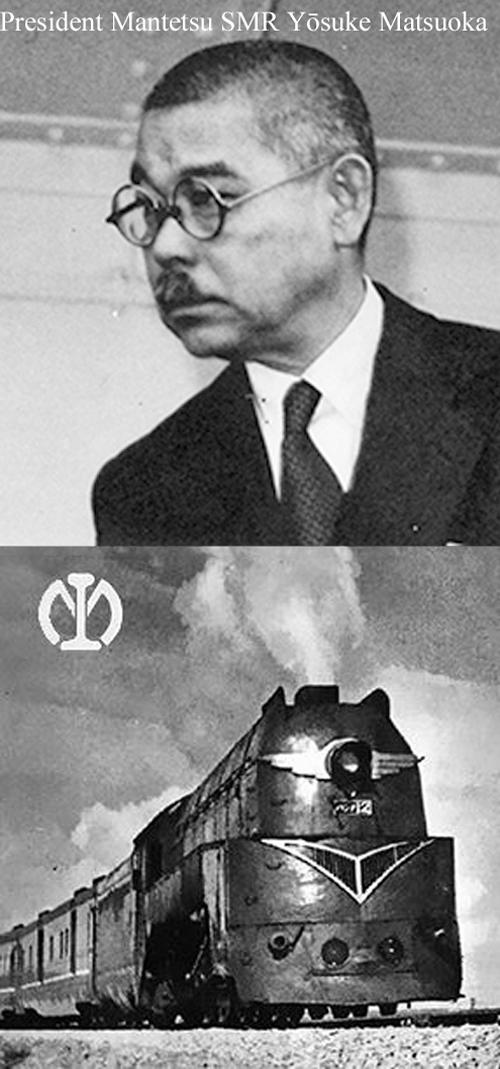Koa Isshin Mantetsu Tsukuru. One Of The Most Desirable WW2 Japanese Officer Sword Smith Producers. Made With Incredible Quality Manchurian Steel
Acquired from the estate of a former 14th Army, Pacific theatre officer, with his medals, and some militaria souvenirs, and it has been kept in his uniform trunk for the past 60 years or more. Signed Koa Isshin Mantetsu Tsukuru, dated spring 1942, numbered Mu 528, and with two rare W inspectors stamps, in all original untouched shingunto mounts. The mounts are matching numbered with the manufacturing logo of the Suyo Company of Tokyo. Highly regarded military sword koshirae fittings and mounts makers.
Koa-Isshin was an economic development propaganda slogan, as literally means "Asia is Revived Heart As One".
This phrase used on the sword was apparently only used between 1942 and November 1943. Thus the sword can be dated linguistically to this period. This is an extremely rare blade specially made by Mantetsu, South Manchurian Railway Company for the senior Officers at South Pacific War zone
So it is clear that Koa-Isshin "Asia is Revived Heart As One" was a propaganda slogan representing Japan's pre-1944 colonisation program and those slogans are attributed to a specific time frame, but likely ceased due to the tide turning in the fortunes of the Japanese Empire, and territory being lost thus the empire's ambitions being curtailed somewhat..
One of the highly desirable, signed Koa Isshin Mantetsu swords, signed blade, Koa Isshin Mantetsu, dated Spring 1942.
A Koa Isshin Mantetsu sword was surrendered by Major General Tamoto on September 20, 1945 to Lt. Col. A.K. Crookshank at Bentong, Malaya. This sword is currently in the National Army Museum, London England.
It has been said, a Koa Isshin would, in the right hands, easily cut through chain mail and probably seriously damage modern plate armour. Koa Isshin swords are superb, high quality, cutting instruments that exceeds all but the very best Koto nihonto for effectiveness. They are, in short, amongst the best blades that Japan has produced. Koa Isshin swords are therefore highly valued by martial artists and collectors and much sought after. In 1937, an innovation in the process of steel production enabled the Dairen Railway Factory to begin the production of sword blades for the Imperial Japanese Army. Dairen was also known as Port Arthur, a strategically important deep water harbour located in Manchuria, China that became a Japanese possession after the Russo-Japanese war.
The reputation these swords gained as durable, reliable, effective cutting blades drove a large demand for them. In 1939, with production increasing the Dairen Railway Factory mark was replaced with the signature “Koaisshin Mantetsu”. Mantetsu literally translates as “Manchurian Steel”. The swords were dated using the zodiac cycle system of Jikkan/Junishi and the season, rather than a standard Nengo system. It would seem, to judge from a comparison of the hardness, that the Koa Isshin was deliberately based on the swords of the 2nd generation Muramasa.
Mantetsu subjected their prototype sword to an appraised cutting test. The company did not tell the appraiser what the sword was. The appraiser identified it on the basis of its cutting ability as a Koto sword forged by Tadayoshi of Hizen; he considered that only a Tadayoshi sword could cut like that. Encouraged by this, Mantetsu established a sword factory and began production of swords in November 1937. Two swordsmiths, Takeshima Hisakatsu and Wakabayashi Shigetsugu, were invited to the Mantetsu facility to teach sword making to the workers. Shigetsugu returned to Japan before the end of the war and became Rikugun Jumyo Tosho.
Initially the swords were signed "Mantetsu Kitau Tsukuru Kore". The name "Koa Issin to" was coined in March 1939 by Yosuke Matsuoka, the outgoing president of Mantetsu. In 1944 the Imperial Army sponsored a Shinsaku-to Exhibition (newly made sword exhibition) on the grounds of the Yasukuni Jinja. One of the many sections was for "Koa Isshin" blades made by different smiths as a patriotic gesture.
Koaisshin swords have quite a following and are very desirable among collectors and practitioners who place high regard in them as functional, effective blades. As a result, they are becoming increasingly difficult to acquire.The nakago is cycle dated.
By the end of the war, after November 1943, Kounan-Issei was a dead phrase, and it was totally out of place to mention the phrase in connection with the last ditch efforts in the South Pacific,
Zodiacal dated, Showa Mitsunoe-Uma Haru in the reign of the Showa emperor Spring 1942. The blade is production numbered by the factory 'Re 328' in kanji on the nakagomune. A system unique to Mantetsu blades.
Fuller and Gregory in their book "A Guide to Showa Swordsmiths", a patriotic phrase. "Koa Isshin" can be translated as "Asia-one heart" - a good patriotic slogan for Japan during WW II. It may also be referring to the "Greater East Asia Co-Prosperity Sphere", Japan's version of the Monroe doctrine, which began in 1932 with Japan's occupation of Manchuria.
In those days, Japan had defined five tribes' (Japan, Korea, Manchuria, China, and Mongolian in harmony over the slogan.
President Matsuoka named this sword the "Kōa-Issin tō" on March 23, 1939.
With "Kōa Issin", it means that the race of Asia will unify the heart and will revive both Asia.
The dream which Japan pictured to itself was entrusted to this sword.
At this time, Mantetsu's Sword Factory was manufacturing 400 sword a month. These swords were presented to the Italian envoy, an Army Chief of Staff, of the Tianjin military, the Shanghai army and navy, and the Lushun Kaikosha.
Blades signed "Koa Isshin" tend to be well finished with good attention paid to the carving of the mei and finish of the nakago. The hada is usually described as ko-itame or nashiji and the hamon is normally done in suguha. All that we have encountered are in good quality regulation Shin-gunto mounts.
Only those blades signed "Koa Isshin Mantetsu" were part of the Yasukuni Shrine sword exhibition.
In 1944 the Imperial Army sponsored a Shinsaku To Exhibition (newly made sword exhibition) on the grounds of the Yasukuni Jinja. The exhibition had many sections; blades, gunto, polishing, etc. One section was for "Koa Isshin" blades. These blades were made by different smiths and entered in the "Koa Isshin" section of the exhibition.
"Mantetsu concentrated technical power and analyzed thoroughly the Japanese sword which depends on being handmade from ancient
times. And they have maintained the strong point without fault of steel materials and fine sword making.
They succeeded in Mantetsu, the creation of a Japanese sword excellent in scientific power."
Quoted translation from; South Manchuria Railway Co,Ltd (SMR). Dalian Railway Factory Sword Works.
Published explanatory of the swords "Kōa Issin" on July 25, 1939.
The blade has no original polish, but you can see the typical Mantetsu suguha hamon in places, it is very bright, with some old storage surface pit marking. We can have it re-polished, it should respond very well indeed. Its mounts and fittings are in very good condition for age, fully complete and original for its blade.
Code: 24073



